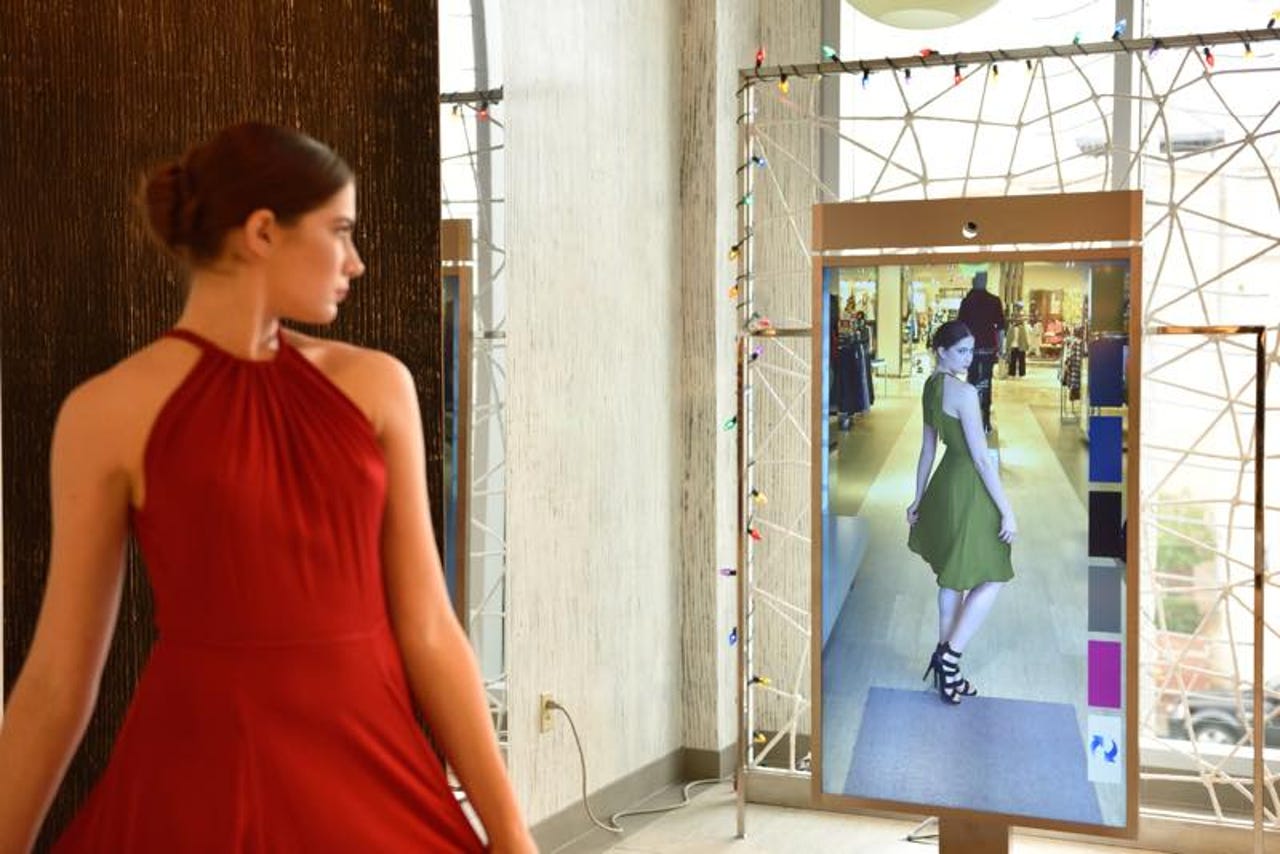How Neiman Marcus's top-down innovation strategy transformed retail and increased revenue


Many retailers have failed to innovate their decades-old storefronts and websites despite the threats posed by Amazon and other digital native companies. But luxury department store line Neiman Marcus adopted a digital-first strategy to customer service, creating an innovation lab and leveraging technologies like artificial intelligence (AI), augmented reality (AR), and visual recognition to transform the shopping experience.
The Neiman Marcus Innovation Lab (iLab) came to life in 2012 in Dallas. Scott Emmons, founder and head of the iLab, previously worked at Neiman Marcus as a project lead and enterprise architect, and has since spearheaded the evaluation, design, testing, and piloting of new technologies and applications for luxury retail.
In his previous role on the enterprise architecture team, Emmons realized that the stores didn't have the foundation in place to support digital, "yet customers were showing up with smartphones and outgunning our own associates' capability to access relevant information that would help them in their shopping journey," he said.
The creation of the lab "allowed me, and the IT organization in general, to stop thinking about our customers being internal Neiman Marcus associates, and start thinking about what we could do to make the shopping experience better for the actual Neiman Marcus customer in a store or online," Emmons said.
Neiman Marcus wanted to leverage technology to differentiate the store from competitors, as well as solve problems for customers, Emmons said.
Notable projects from the lab include Memory Mirrors -- giant video screens and cameras that allow shoppers to see outfits in 360 degrees and compare clothing options side-by-side. These have rolled out to most of the store's 44 locations nationwide, Emmons said.
Following the success of the smart mirrors, the lab rolled out Memory Makeover Mirrors as well, which allow beauty associates to record makeover sessions with customers and send the personalized tutorials home to them. This also gives the beauty associate a full record of the customer interaction and products used, Emmons said. The store also added AR beauty components that allow customers to try on makeup virtually when looking in the mirrors -- similar to Sephora's Virtual Artist app feature.
With an increased focus on online sales, the lab also launched the Snap Find Shop visual search feature in its app, which allows customers to take a photo of a shoe, handbag, or clothing item and find a similar style in the store's product line using AI.
The efforts have paid off: In Q2 2018, Neiman Marcus reported total revenues of $1.48 billion -- an increase of 6.2 percent over Q2 2017. Net earnings were $372.5 million, compared to a net loss of $117.1 million the year before.
SEE: Digital transformation: A CXO's guide (ZDNet special report) | Download the report as a PDF (TechRepublic)
Embracing failure
The concept of trying and failing at several new projects is not exactly natural in a corporate environment. "Neiman Marcus is among the most advanced because they've allowed themselves to build a model for innovation and experimentation," said Brian Solis, a principal analyst at Altimeter. "They've built a culture from that, that it's okay to experiment and fail."
The iLab in its current form is rare for an enterprise, Solis said. "Innovation centers often act in isolation," he added. "They explore innovation opportunities, partner with startups, and pilot programs, not to the greater awareness or understanding of the organization at large. So one part of the organization becomes innovative, but others do not benefit from that work."
However, Neiman Marcus approached this by essentially offering 'Innovation as a Service' to help the rest of the organization transform, Solis said. This means not just deploying new technologies in flagship stores, but helping other teams throughout the organization learn from their work, he added.
The retailer has come a long way in terms of work and expectations since the lab started, Emmons said. "We even began to do specific innovation programs in places other than technology -- we have an innovation team now that focuses specifically on product, for example," he added. "I see it blossoming around the organization."
Other retailers need to invest in innovative experiments, or risk being left behind, Emmons said. But this doesn't necessarily mean create a large, expensive external organization to focus on digital.
"I think our approach has been very grassroots and built internally and cost-effectively," Emmons said. "That's allowed a lot of staying power for the lab, where I've seen a lot of other retail innovation programs come and go."
Early and continuous support from the C-suite was also key, he added.
Innovate, but don't forget the basics
It's not that the majority of retailers don't want to innovate -- it's that they don't know how to, Solis said. "They have had over a hundred years of traditional commerce that really started to unravel going back to the '90s, and then only continued to branch off in new directions while they were still trying to figure out e-commerce," he added.
Many fall into the trap of chasing the latest hyped-up technology, said Sucharita Kodali, vice president and principal analyst at Forrester. "These days it is AI and machine learning," Kodali said. "But they often do miss the boat on basics."
Take Williams Sonoma, Kodali added: The company acquired an AR startup last year for $112 million to begin work in that space, yet many customers still see online orders cancelled because the company doesn't know what it had in stock, she said.
"What is different about Amazon is that they do chase the moonshots, but they also nail the basics with laser-sharp automation," Kodali said. "Retailers don't challenge their processes enough."
Apparel retailers tend to iterate, rather than innovate, Solis said, adding features like buy online and pick up in store. Neiman Marcus is innovating in the physical retailer experience as well, and in omnichannel experiences, he added.
"The best companies are attaching themselves to innovation because it is a competitive advantage," Solis said. "Neiman Marcus has demonstrated that better than most of their competitors."
Also see
- How Sephora is leveraging AR and AI to transform retail and help customers buy cosmetics (free PDF) (TechRepublic)
- Eight obstacles to overcome in your digital transformation journey (ZDNet)
- How to create a vision for digital transformation at your company (TechRepublic)
- What's really holding back today's CIO from digital transformation? (ZDNet)
- 6 questions the C-suite must answer to achieve digital transformation (TechRepublic)